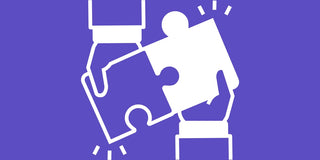Picture this: you are attempting to multitask between making lunch in the kitchen and cleaning the house when your toddler suddenly raises a loud cry and throws a hissy fit. Your instinctive reaction is to get irritated, as it gets too much to handle. Have you ever examined why?
The term "toddler" comes from the word "toddle," which refers to walking in an unsteady manner. It refers to children between the ages of 1 and 3. This is also the point where significant cognitive, emotional, and social growth happens. It is natural that children are in the primary stage of development and hence not very good at expressing their needs.
For instance, if you observe a toddler, you will notice that they cry for everything - whether hungry, cranky, sleepy or thirsty. It is their way of drawing attention towards themselves. However, it is also a widespread tantrum mechanism. Screaming is another while kicking and falling are other examples of tantrums. Typically, they could include outbursts of anger, frustration, and chaotic behaviour, when your child decides to revolt.
This brings us to a vital question - what triggers these tantrums and how can they be handled? Toddler tantrums happen when they are hungry, tired or uncomfortable. Another major cause is a feeling of conflict, when they get disappointed with something, but do not possess the coping skills required for tackling strong emotions. Tantrums replace the words in their communication method. When it comes to managing these tantrums, here are a few strategies that you may consider adopting:
-
Breathe and relax
This may not sound practical considering that your first reaction to your child’s tantrum would be irritation or exasperation. However, it is very effective in dealing with tantrums and is good for your energy levels, too. Toddlers look up to adults and hence staying cool and calm can improve the situation. Take a few deep breaths before reacting and you will notice that you can handle the scenario like a pro. Feel free to step away for a second, calm yourself and manage your child with clarity. Do not yell at them as that will encourage them to shout and worsen the situation.
-
Stay alert
The most familiar triggers are those that concern the feelings of hunger, tiredness and discomfort in children. Over some time, you will be attuned to your child to know the scenarios that cause tantrums and hence, you can address and modify them beforehand. Toddlers may also get irritated when you suddenly switch activities. Reduce the magnitude of the suddenness by telling them to cut down on what they are doing and eventually make them stop. For example, make them eat food when they are engaged in playing with toys - that is, tell them to add two more blocks and pause to have food. This reduces the suddenness, which in turn reduces frustration when they come to eat. They are less irritated and hence, less prone to tantrums.
-
Choose your battles
You need not always handle your child’s tantrums. Sometimes, it is perfectly fine to let them win. In certain situations, it is the best course of action to be adopted. However, choose the tantrum wisely, so that compromising does not affect the child in any way. If your child wants to eat more ice cream, it may not be a great idea to let them have their way. But, you can oblige when it concerns something like playing their favourite song again or letting them play for some more time. Please note that the tip should be used sparingly, as regular use will encourage your child to continue with tantrums to get what they want.
-
Distraction, distraction, distraction!
This is a very useful tip concerning handling toddler tantrums. Since they have short attention spans, they can be easily diverted and hence, you can avoid the tantrum altogether. For instance, when you take them shopping and they are attracted to a particular game that is not suitable for their age and is adamant about wanting it, you can distract them by showing a more appropriate game or a soft toy and shifting their attention away from the former. You can also use humour to distract them by making jokes or silly faces.
-
Commend positive behaviour
If there is one thing that you must always remember about toddlers, it is that they will try to match with you to connect with you. If you shout, they will do the same. You can leverage this trait to your benefit. Since they respond well to your feedback, praise their positive behaviour such as good emotion management or behaving appropriately in a given situation. This will reinforce the positive behaviour in them and will motivate the children to repeat it. This will help you because when positive behaviour goes up, tantrums come down and they become easier to handle.
-
Keep commands clear and concise
In some cases, using specific commands can help your child comprehend that they should not continue with their tantrums and hence, they will stop. For instance, when they are irritated, you can say “Let us play with the blocks” or “Let us give food to our dog”. These commands are specific and allow them to engage in some task and that will be successful in reducing the chances of tantrums from their side.
With toddlers, there is always an air of unpredictability that surrounds you. When none of these tips works, simply hug them. This will calm them and make them feel cared for and secure, which will reduce their tantrums.
However, avoid these common mistakes: don't consistently give in to their demands, avoid bribing them, refrain from giving excessive attention or repeated warnings as it weakens the impact of your words, and limit over-consoling, as it can unintentionally reinforce the behaviour. While toddler tantrums can be challenging, implementing these practical tips can help create a calmer environment and foster a positive connection with your little one, making this journey more manageable and enjoyable for both of you.

















